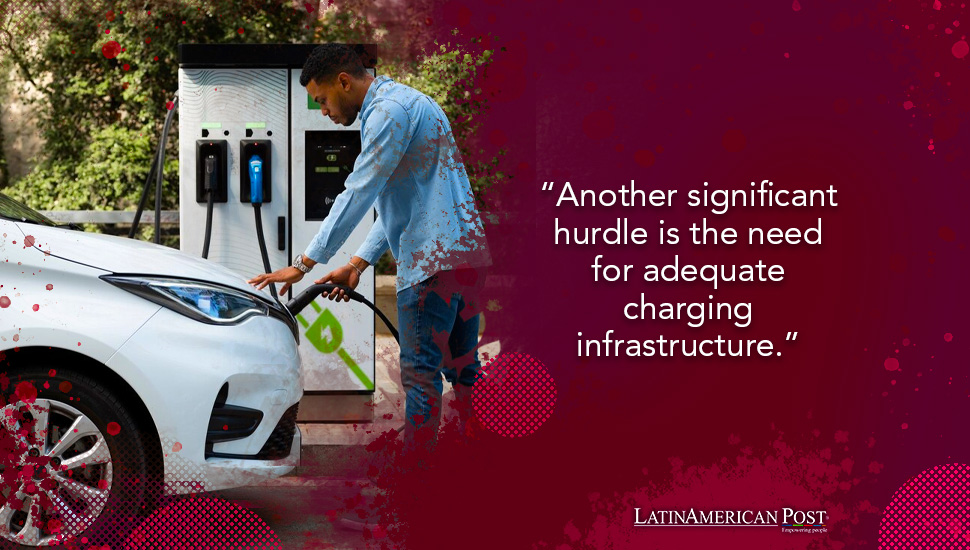The Bumpy Road Ahead: Challenges of Electric Vehicle Massification in Latin America

Amidst climate change concerns and a global shift towards cleaner, more sustainable transportation, the prospects for electric vehicles (EVs) in Latin America have garnered attention. Recent reports indicate that sales of fully electric and hybrid cars in Brazil are poised to surge by an impressive 60% this year, with forecasts of over 150,000 vehicles sold in 2024, up from 93,927 in 2023.
Electrifying Latin America: Navigating Challenges for EV Massification
While these numbers paint a promising picture, the road to EV massification in Latin America is far from being smootheremand for electric vehicles in Brazil and across Latin America; it highlights a growing awareness of environmental issues and a desire for cleaner, more eco-conscious modes of transportation. However, beneath this burgeoning interest lies a series of formidable challenges that must be addressed to ensure the sustainable electrification of the region’s automotive sector.
One of the most pressing challenges facing EV massification in Latin America is the heavy reliance on imports. Most electric vehicles on the market are imported, leading to a lopsided trade imbalance and a dependence on foreign manufacturing. While domestic production is gradually increasing, it still lags behind the demand for EVs.
Tariffs and Affordability: Government Policies at Play
This dependency on imports becomes even more problematic when considering the recent decision by the Brazilian government to reimpose import taxes on electric vehicles and raise tariffs on hybrids. Such policy changes can hinder the affordability and accessibility of EVs, potentially slowing down the transition to electric mobility. Governments must strike a delicate balance between encouraging local manufacturing and maintaining affordability to foster a sustainable future for EVs in the region.
Another significant hurdle is the need for adequate charging infrastructure. Electric vehicles are only as practical as the availability of charging stations allows them to be. In Latin America, the charging infrastructure remains underdeveloped, deterring potential buyers who are concerned about range anxiety. A robust and widespread charging point network is imperative to accommodate the growing EV user base.
Price Gaps and Incentives: Navigating the Economic Landscape
Furthermore, the cost of EVs in Latin America often surpasses that of their gasoline counterparts, even with government incentives. High import taxes, importation fees, and the limited availability of local manufacturing contribute to this price gap. To encourage EV adoption, governments must consider comprehensive incentives, tax breaks, and subsidies to level the playing field and make electric vehicles more accessible to a broader range of consumers.
Moreover, the environmental impact of EV battery production and disposal must be addressed. While electric vehicles are touted as environmentally friendly, the production and disposal of lithium-ion batteries come with challenges. Ensuring the responsible and sustainable management of EV batteries should be a priority to maintain the green credentials of electric transportation.
Public Awareness and Education: Shaping the Future Consumer
Public awareness and education are also essential components of the EV massification process. Many consumers in Latin America still need to familiarize themselves with the benefits and advantages of electric vehicles. Educating the public about the reduced carbon footprint, lower operational costs, and the long-term benefits of EV ownership can help dispel misconceptions and drive demand.
Also read: Colombia’s Economic Policy: Stability Over Rate Cuts
In conclusion, while the rise in electric vehicle sales in Brazil and Latin America is encouraging, it is vital to acknowledge and address the multifaceted challenges that lie ahead. Achieving EV massification in the region requires a concerted effort from governments, manufacturers, and stakeholders to overcome import dependencies, develop charging infrastructure, close price gaps, and ensure the responsible handling of batteries. Only through a collective commitment to sustainability and a strategic approach to electrification can Latin America pave the way for a greener and cleaner automotive future.




